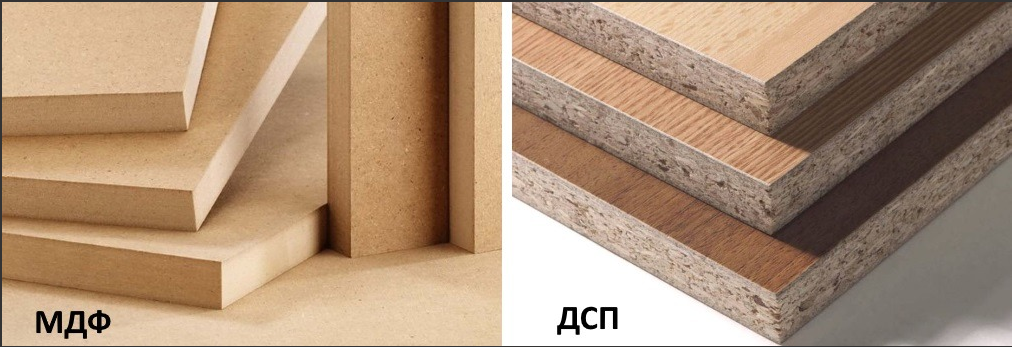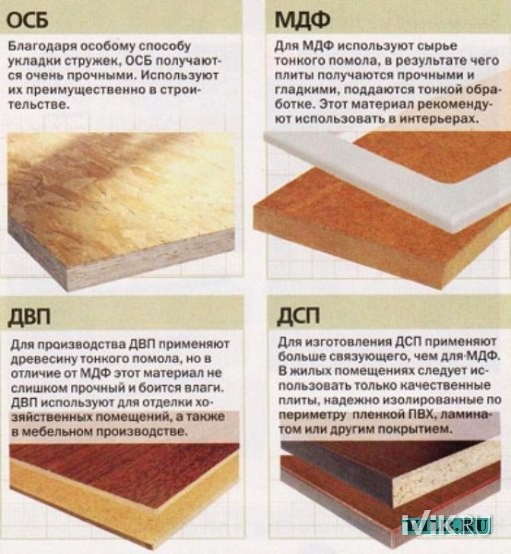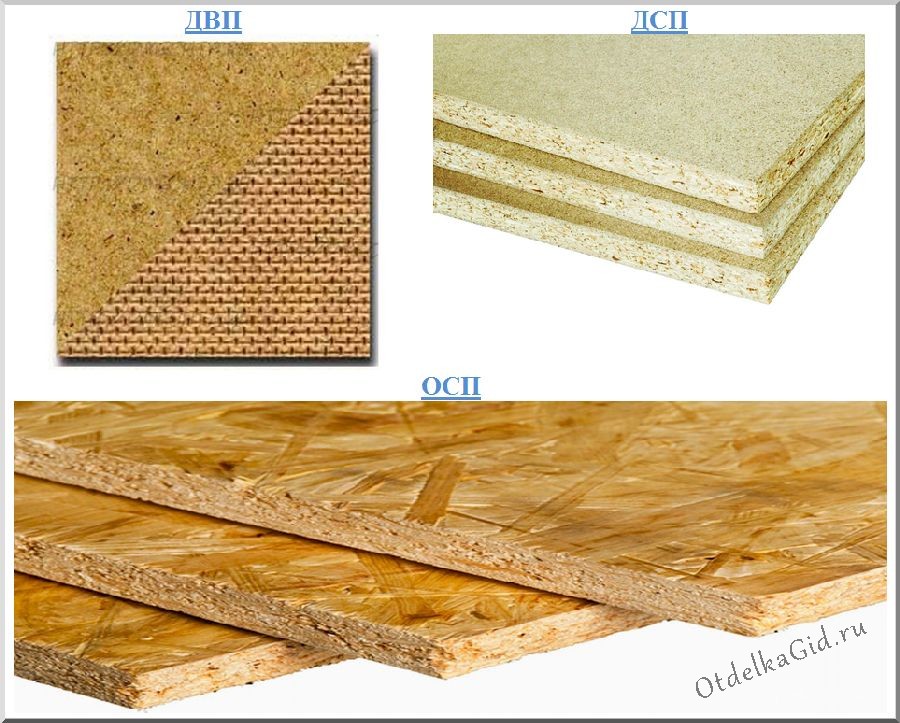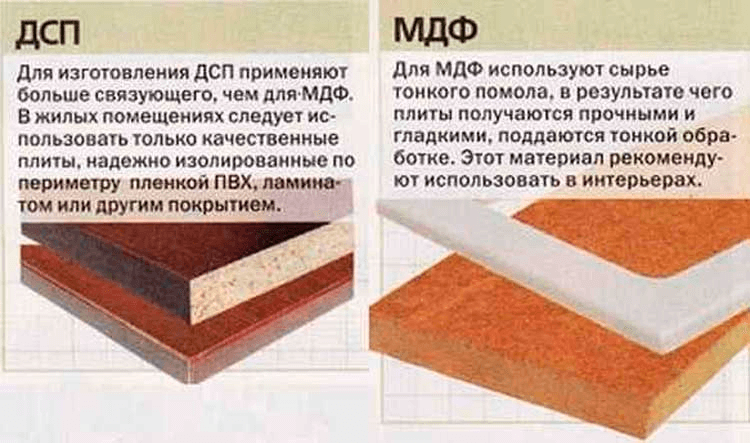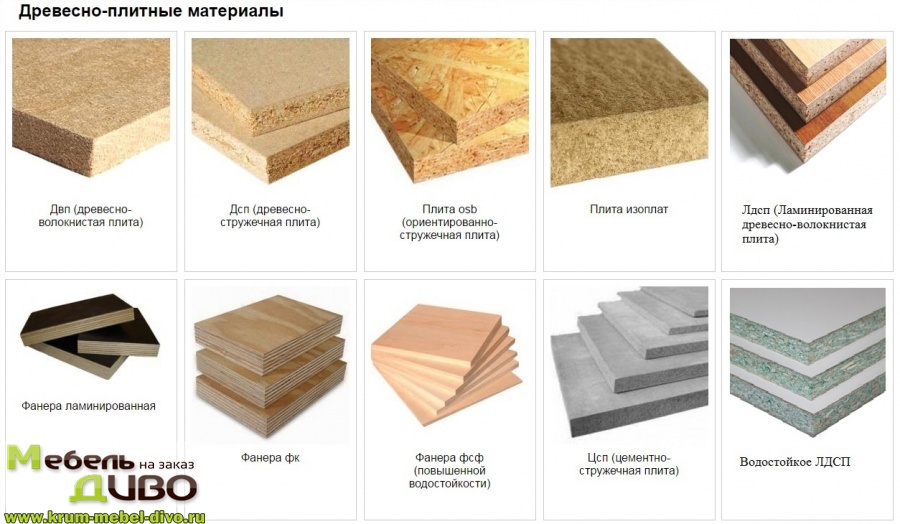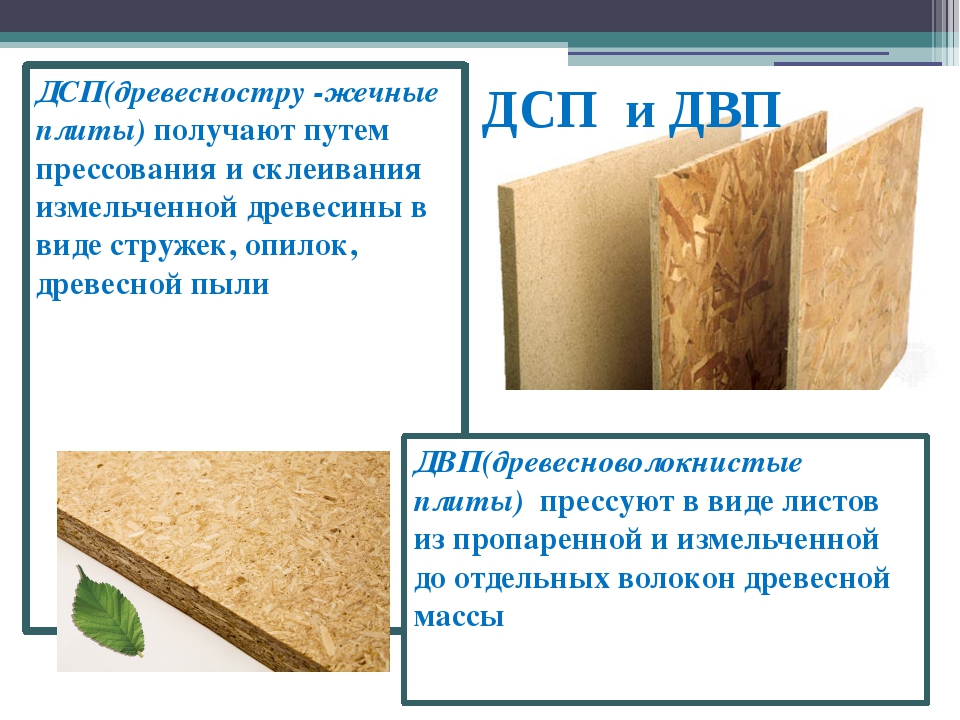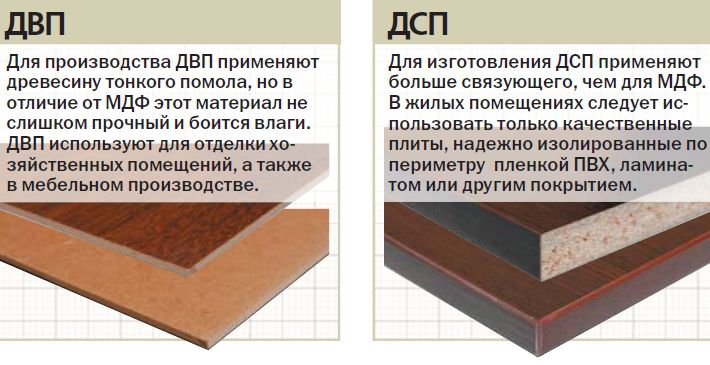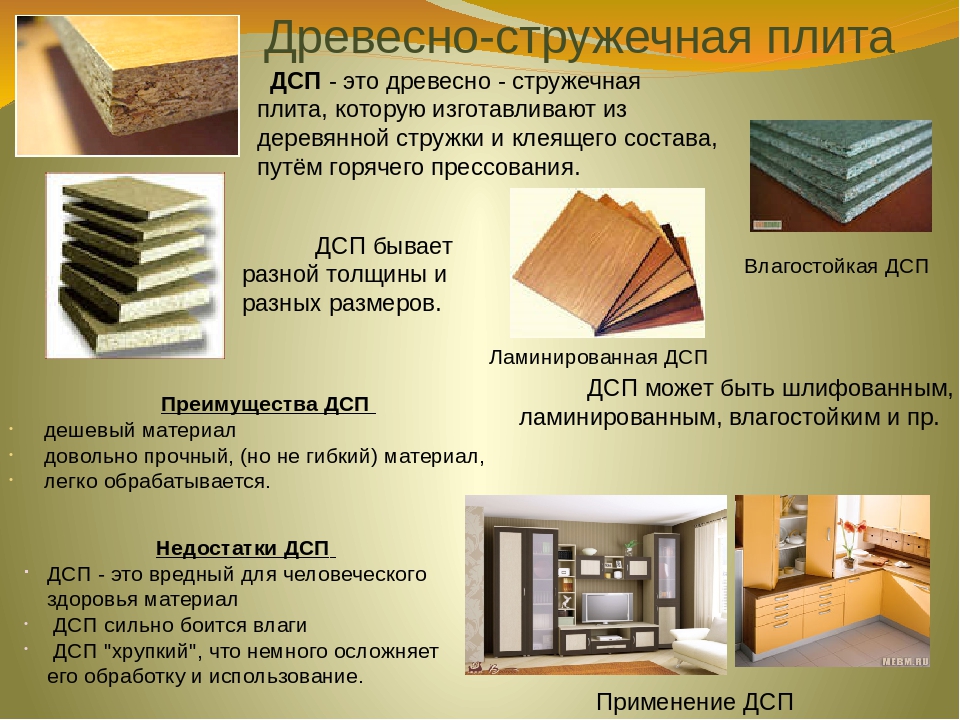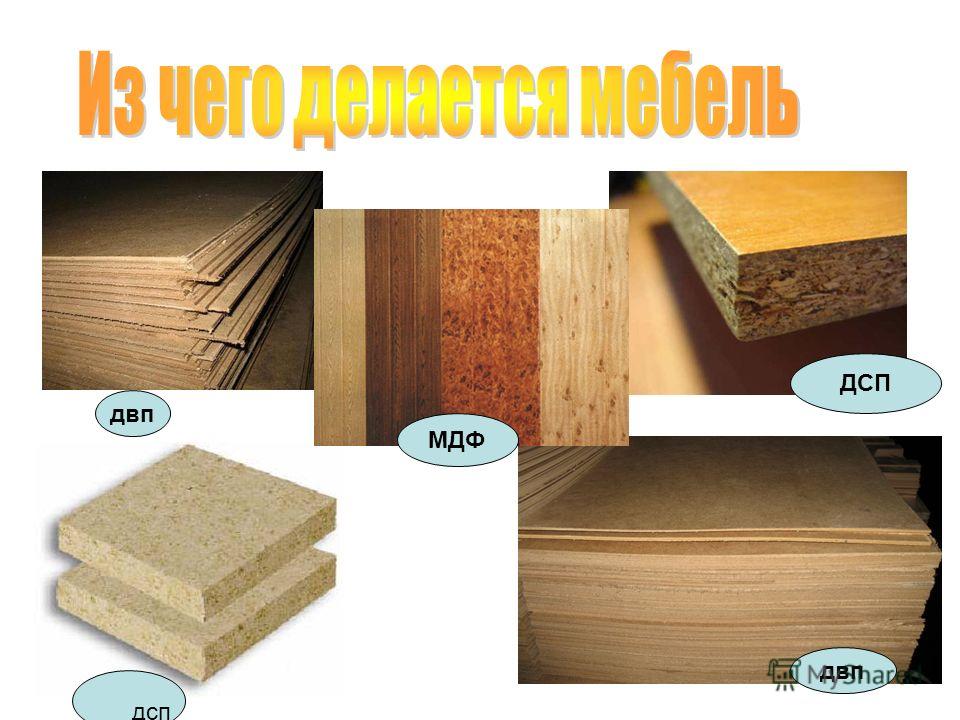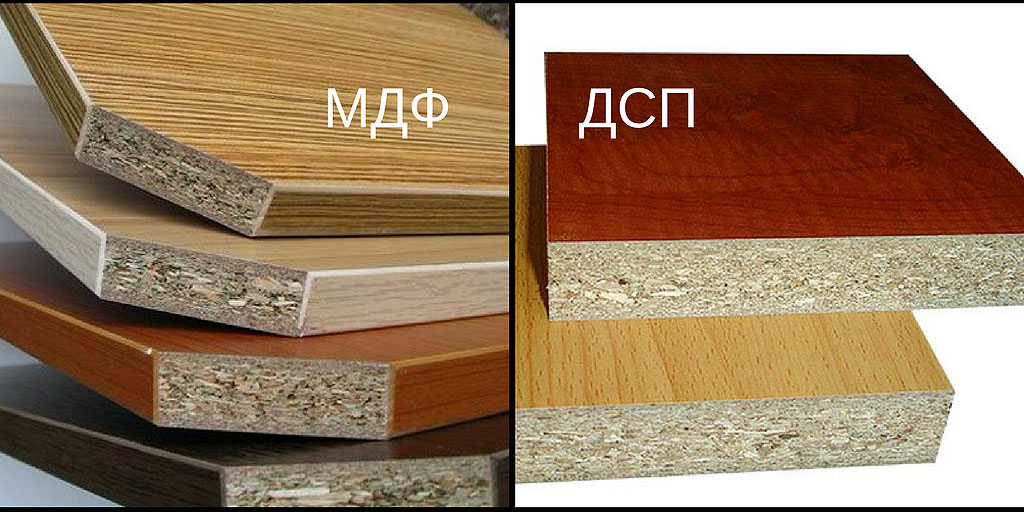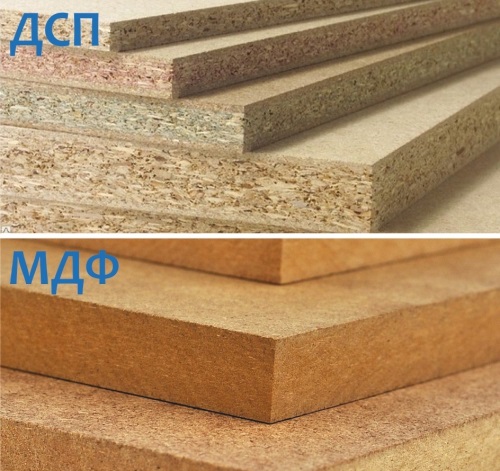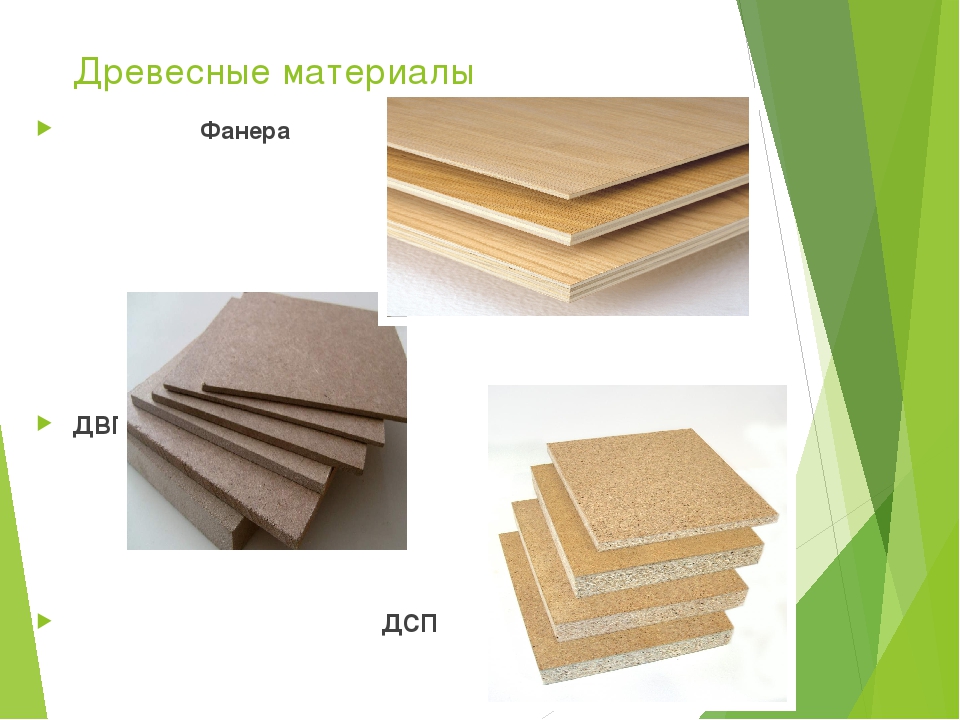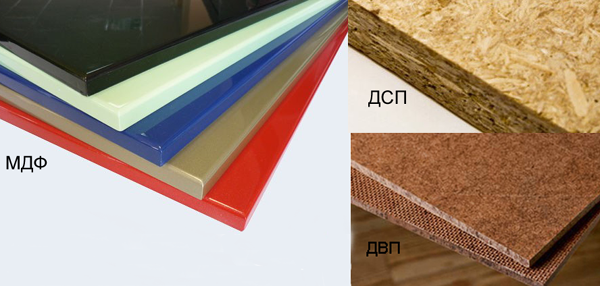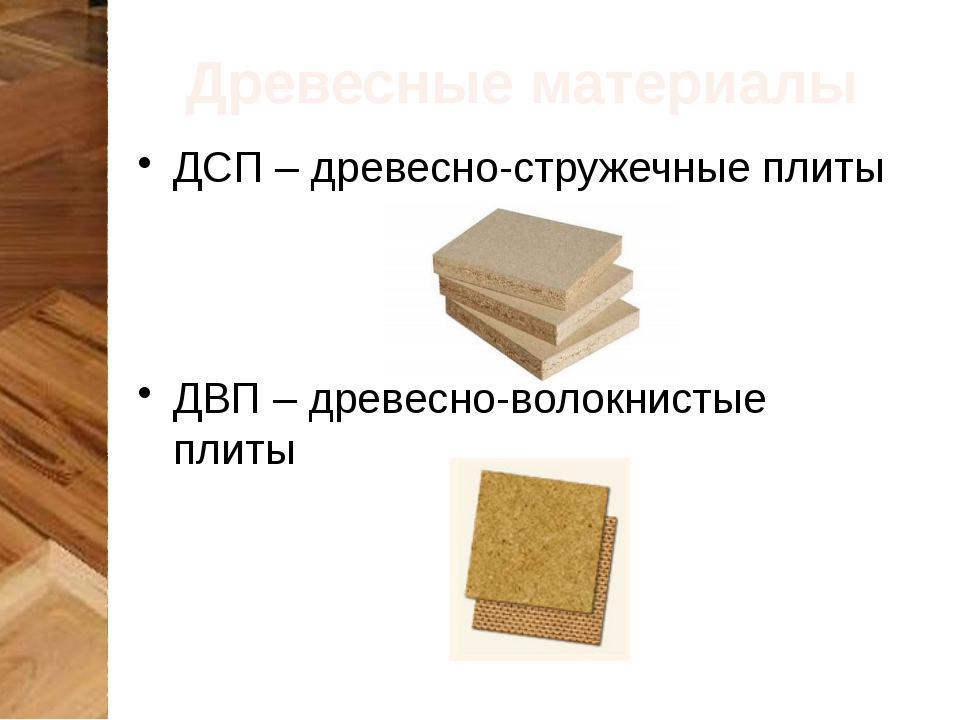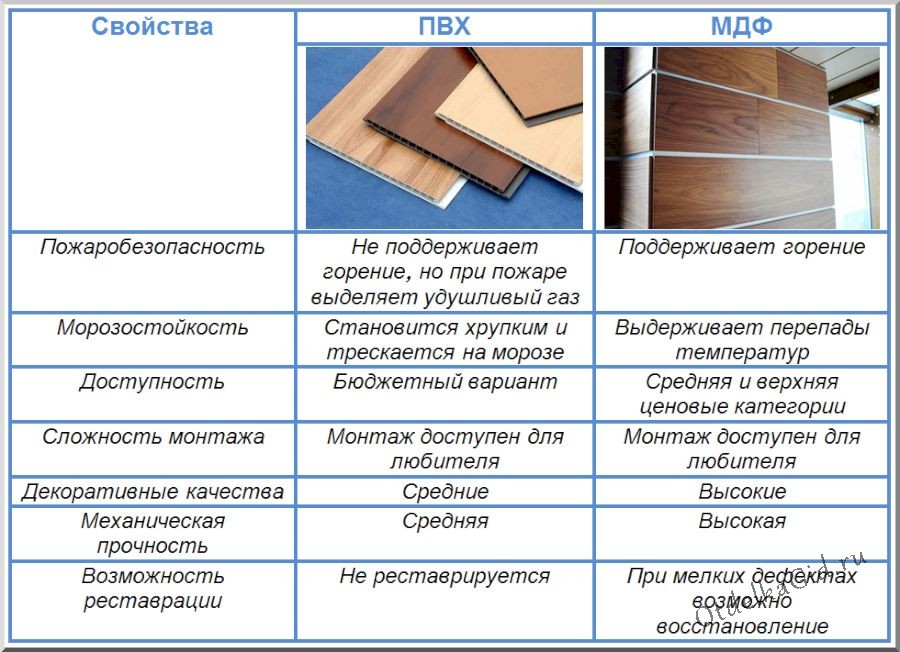What's better?
The cost of finished furniture products depends on what material is used for their production. Therefore, in budget class furniture, inexpensive chipboard panels are used, which can be covered only on one side with a moisture protection film. In addition, for the production of furniture, it is also important whether the material from which it is made emits formaldehyde. For example, a higher quality laminated chipboard material will be used for a bed, since its protective layer does not allow a vapor of a harmful component to come out.
The cost of budget furniture made of chipboard is also influenced by the type of material. There are several types of chipboard.
- I grade - sawdust of fine standard fraction without foreign inclusions is used as raw material for the manufacture of the panel. The finished chipboard turns out to be perfectly flat, smooth, it has no chips or cracks. The first grade of chipboard is subject to mandatory additional decoration with foil or veneer, and this is done on both sides of the chipboard.
- Grade II - made from high-quality sawdust raw materials of different fractions, let's say a minimum percentage of impurities. The finished board may have minor damage in the form of chips or scratches. For grade II chipboard, decorative cladding may not be used.
- III grade - made from sawdust of various wood species, may include a small percentage of foreign inclusions. The material is not exposed to decorative cladding, since this grade is not used in furniture production. Particleboard III grade can only be used for construction purposes.
By the type of protective coating, chipboards are divided into such main types as:
- without cladding - this material is called rough; it applies only when performing construction work;
- laminated - chipboard has a durable varnish coating or melamine film treatment;
- veneered - chipboard has an external finish with natural wood veneer.
Unlike chipboard, chipboard materials have a wider variety. Lamination of the board can be done in various colors, as well as create an imitation of any texture. Furniture products made of laminated chipboard can harmoniously integrate into almost any interior composition. They look solid and elegant, while having a small, quite affordable cost. In some types of laminated chipboard material, a fire-resistant film containing carbon or HLP class material, which is resistant to fire, can be used as a laminating layer.
Chipboards of the laminated type, despite the mass of their advantages, are prone to the formation of chips and cracks. Most often this occurs from heavy objects falling onto the surface of the plate or under the influence of a mechanical factor. It is no longer possible to eliminate such a defect in furniture later. Due to this property of the material, it is not subjected to various treatments by milling, therefore, it is impossible to obtain a relief surface, smooth bevels or rounding of a chipboard panel.
When a chip or crack appears, the surface of the chipboard loses its safety, since formaldehyde begins to release outward, therefore, the quality of the laminating layer and its stability play a very important role for this type of chipboard.
For the manufacture of countertops or kitchen sets, chipboard material is not used, since only the laminated surface of chipboard is able to withstand frequent and prolonged contact with water without prejudice to its appearance. Although prolonged wetting is undesirable even for laminated boards, such an effect from the edges of the material is especially dangerous.
To make low-cost, but high-quality and beautiful furniture, modern manufacturers use both woodworking products - chipboard and laminated chipboard, moreover, ordinary chipboard is used to create the supporting frame of furniture, while the front part is performed using laminated board. Furniture products made from a combination of materials can be used both for home use and in office premises.
See the next video for the differences in materials.
Particleboard and MDF - what's the difference?
Due to the difficult situation of the post-war period, many industries were forced to look for alternative materials for the manufacture of products. Although wood was considered the most expensive option, many buyers still could not afford it. In view of such a feature, a new material was introduced, which was lower in cost, but practically did not yield to natural wood in terms of quality characteristics.
If you bypass all the subtleties of the manufacturing process of this material, then we can say that both MDF and chipboard are hard pressed lumber, which are glued together with special viscous resins. Safety, durability and field of application of materials directly depends on which resins were used, in what quantity, and of what quality.
Particleboard (chipboard) contains compressed shavings and sawdust impregnated with formaldehyde resins. Depending on the grade, chipboard has different quality characteristics: from loose material with a density of 300 kg / m 3 to a more durable and expensive 600 kg / m 3, which is used in the manufacture of furniture.
Modern production makes it possible to minimize the harmful effect of the binder resin and improve the appearance of the board with the help of coating with melamine film - lamination. Hence the name "chipboard". The film has good aesthetic properties and does not allow formaldehyde to evaporate.
MDF immediately has a smooth and even surface. Such a board is more dense and durable, resistant to drilling and moisture in comparison with laminated chipboard. It is also better suited for deep milling and deformation when creating curved furniture fronts. In addition, the MDF board has significantly higher environmental properties due to the fact that mainly natural resins, lignin and paraffin are used as impregnation of sawdust. Formaldehyde is also present, but in a much smaller amount.
For greater clarity of the differences between the two materials, you can compare the structure of chipboard with heterogeneous raw materials passed through a blender, and MDF with a product from a meat grinder. The density of the MDF board varies from 600 to 800 kg / m 3, which in conditions of increased moisture allows the material to surpass even natural wood in some characteristics.
There are several general conditions for the care of furniture made of MDF or chipboard.
- Prolonged exposure to high temperatures is undesirable: at 75 degrees and above, the coating may peel off.
- Another factor is sunlight, which can also change the appearance of the slab. The film on laminated chipboard is more susceptible to fading, although MDF can change color somewhat with constant exposure to sunlight.
- You also need to be careful about long-term interaction with water. If the joints of the coating are not airtight, when water gets inside the slab, the sawdust will swell, and the slab itself will lose its appearance and properties. However, this is an extreme case. Under normal living conditions, with short-term exposure to water, which is inevitable in the kitchen, the stove can retain its original appearance for a long time. MDF manufacturers claim that fiberboard can withstand even a small flood.
The common plus of both materials in comparison with natural wood is resistance to pests and fungal infection.
Differences between chipboard, chipboard and MDF
In the same IKEA, we see furniture made of laminated chipboard and MDF, visually perceiving only the difference in price (with the exception of especially glossy ones - there the differences are obvious by eye). MDF furniture is much more expensive. Why? What is the difference between chipboard, chipboard and MDF - one wood particle board from another?
Let's start with the fact that the difference between chipboard and chipboard is lamination. Natural veneer is no worse than laminating film, but it is impractical to process chipboard with it, so further we will talk about the difference between chipboard and MDF.
List of differences:
- Chipboard is much less resistant to moisture. It would seem that the water has nowhere to go, but between the edge and the laminating film, the liquid finds (as the proverb says) a microscopic gap and gets inside. Inside, it remains (for rapid evaporation, an area is needed, but it is not), expanding the chipboard to unimaginable sizes. However, long before the extra 20-30% in the volume is set, the sheet will warp, the film or veneer (whatever that may be) will crack. A few drops of water falling in an unfortunate place can irreversibly disfigure the countertop. Even the so-called waterproof material still absorbs moisture - this is its structure.
- Chipboard is more toxic. It is more toxic, because the information about the complete non-toxicity of fiberboard is incorrect: even if the material emits as much formaldehyde as natural wood, this does not mean that there is no emission at all. It is there, but much lower. It happens, they write that there is no formaldehyde in the MDF - this is not true (moreover, formaldehyde is everywhere: it is used in medicine, the food industry as E240, used for grain fumigation, the substance is part of cosmetics, is contained in the human body - a matter of concentration ). Wood fibers are impregnated with urea resins containing formaldehyde. Modification helps to reduce emissions.
- MDF is suitable for the manufacture of furniture of complex shapes, which is impossible from laminated chipboard.
- MDF has a higher density - you can mill, make inclined holes. The material, unlike the better "holds" the fasteners.
- There are practically no differences in color solutions, with the exception of glossy MDF (but this is no longer a color) and custom made - the enamel can be tinted in any shade that comes to mind, so here MDF wins.
- MDF is noticeably more expensive, due to the quality parameters of the material. However, this seeming high cost, which is understandable to any person who can count: even by rough estimates, MDF furniture will end up being cheaper, because it will last much longer.

No edge - the entire board is covered with a single layer, which eliminates gaps between the film and the edge
Chipboard or MDF? MDF loses to chipboard only in price, but this cannot be significant, considering all the advantages. When purchasing furniture, the decision is made by the buyer, we can only advise you to make a balanced choice.
No matter how much you want to save money, it is better to give preference to high-quality material - environmentally friendly, which is actually important, because the kitchen temperature is often elevated, and formaldehyde emissions increase from heat (we do not understand why E2 is prohibited only in the production of children's furniture - in the kitchen this the type of product is even more harmful). Again, the savings in the case of choosing furniture from chipboard are illusory.
Again, aesthetics do matter.

Furniture slabs in the nursery: pros and cons
We always approach the arrangement of a children's room with great care and think over every little thing. The range of children's furniture is great. Some parents buy ready-made furniture, others make it themselves, according to their own plan and development, taking into account the peculiarities of the children's room; the rest buy furniture boards and assemble them themselves.
Children's furniture is made of different materials: natural, MDF boards, chipboard boards, laminated chipboard, fiberboard, plastic, etc. Of course, it's not bad if the furniture is made of natural wood.However, many families with children do not have the opportunity to purchase or make to order such furniture. Then an alternative to natural wood comes to the rescue - mdf, chipboard plates, etc.
Consider mdf materials for making children's furniture in the room.
MDF is a medium density board with a wood fiber structure. Fine wood sawdust is used for its manufacture. Binds such sawdust lignin, paraffin. For the health of people, especially children, these plates are safe, therefore their price is higher than that of chipboard - plates. Thus, MDF boards for children's furniture are environmentally friendly and soft material. Backs of cribs, tables, highchairs and chairs for children from 3 years old, cabinets, shelves and various details are made from such plates.
The back walls of the cabinet and the bottoms of the drawers are made of chipboard plates. A wardrobe is essential in a children's room, so it is better if it is made to order from reliable materials. The fact is that the bottom of the chipboard plates is very flexible, sags under the heavy weight of children's things, so this furniture has to be repaired very often. Agree, the main argument of the low price and durability is not easy to throw away, but furniture made of chipboard has a significant disadvantage: the presence of formaldehyde resins in the material. It is with resins that sawdust and shavings are impregnated and held together. Resins make chipboard boards resistant to moisture.
For the production of children's furniture from chipboard boards, the emission level of formaldehyde resins is taken into account. The E1 level of resins in the slabs is relatively safe, therefore it is allowed to make both children's furniture and components from them.
Furnishing a nursery is not easy and often very expensive. For a children's corner, MDF boards will be most preferable. They contain phenol and formaldehyde resins, however, their amount is small, that is, within the normal range. Therefore, in percentage terms (50-60%) mdf boards are equated to clean materials in terms of environmental performance. Children's furniture made of MDF boards does not have a toxic coating and does not harm the fragile child's body.
When making a choice between materials for making children's furniture, you can focus on combining them. Some manufacturers make furniture with a combination of natural wood and MDF boards. Such furniture is cheaper than the analogy made from natural materials.
Thus, the use of MDF and chipboard furniture boards in the device of a children's room is possible if they have an appropriate quality certificate.
There are not many advantages to furniture boards using resins. If MDF boards still inspire confidence among buyers of joinery products, then chipboard boards do not lend themselves to any criticism. First of all, chipboard boards are the final products of natural wood processing (sawdust, shavings). Such products cannot be 100% safe.
Natural wood furniture boards have a lot of advantages. They have one significant drawback - high cost. It is worth considering that you need to buy furniture boards made of natural wood with a quality certificate. If the technologies for processing natural wood (alder, pine) are not followed, the quality of such boards leaves much to be desired, despite their natural origin. The most acceptable option is to make furniture boards yourself from wood (pine, beech, alder, birch, oak).
MDF and chipboard: what is the difference
Particleboard (chipboard) contains compressed shavings and sawdust impregnated with formaldehyde resins. Depending on the grade, chipboard has different quality characteristics: from loose material with a density of 300 kg / m 3 to a more durable and expensive 600 kg / m 3, which is used in the manufacture of furniture.
Modern production makes it possible to minimize the harmful effect of the binder resin and improve the appearance of the board with the help of coating with melamine film - lamination. Hence the name "chipboard".The film has good aesthetic properties and does not allow formaldehyde to evaporate.
Manufacturing of MDF board is carried out according to the improved technology of chipboard production - by drying wood fiber and hot pressing. Medium density fibreboard (MDF) contains only the smallest sawdust compressed to a homogeneous state. Unlike chipboard, which must be carefully sanded before being coated with a film,
MDF immediately has a smooth and even surface. Such a board is more dense and durable, resistant to drilling and moisture in comparison with laminated chipboard. It is also better suited for deep milling and deformation when creating curved furniture fronts. In addition, the MDF board has significantly higher environmental properties due to the fact that mainly natural resins, lignin and paraffin are used as impregnation of sawdust. Formaldehyde is also present, but in a much smaller amount.

For greater clarity of the differences between the two materials, you can compare the structure of chipboard with heterogeneous raw materials passed through a blender, and MDF with a product from a meat grinder. The density of the MDF board varies from 600 to 800 kg / m 3, which in conditions of increased moisture allows the material to surpass even natural wood in some characteristics.
Care of laminated chipboard or MDF furniture
There are several general conditions for the care of furniture made of MDF or chipboard.
- Prolonged exposure to high temperatures is undesirable: at 75 degrees and above, the coating may peel off.
- Another factor is sunlight, which can also change the appearance of the slab. The film on laminated chipboard is more susceptible to fading, although MDF can change color somewhat with constant exposure to sunlight.
- You also need to be careful about long-term interaction with water. If the joints of the coating are not tight, when water gets inside the slab, the sawdust will swell, and the slab itself will lose its appearance and properties. However, this is an extreme case. Under normal living conditions, with short-term exposure to water, which is inevitable in the kitchen, the stove can retain its original appearance for a long time. MDF manufacturers claim that fiberboard can withstand even a small flood.
Chipboard or MDF: which is better
The common plus of both materials in comparison with natural wood is resistance to pests and fungal infection.
Advantages and disadvantages of MDF:
Chipboard and MDF: combining materials

The best option for a wallet, not at the expense of quality and durability, is to choose furniture with a combination of materials.
Chipboard will perfectly fulfill its functions as a basis for the kitchen body, and MDF, thanks to the variety of films for covering and the possibility of decoration, will make beautiful facades that fit perfectly into the interior of the kitchen. So you shouldn't choose which is better for the kitchen: MDF or chipboard? The answer lies in the correct combination of both materials and their rational purpose.
For example, laminated chipboard, in addition to being used in the furniture body, can be used as an inexpensive but durable and reliable tabletop of various thicknesses: from 25 to 38 mm. The slab is covered with multilayer plastic using the Postforming technology. Such a plate is resistant to moisture and mechanical damage, so it will last for many years without requiring special care.
High-quality laminated particle board in combination with MDF can be used in the production of other furniture, including wardrobes, beds, furniture groups for a children's room. If the joints and joints of laminated chipboard are reliably protected, and the manufacturer has the appropriate certificates confirming the environmental friendliness of the material, then such furniture is safe to use and can deservedly take a place in the apartment.
Which is better: chipboard or MDF
There is no unequivocal answer to this question, since materials differ in several main parameters. Let's take a look at some of them.
Chipboard furniture is significantly cheaper than competitive raw materials. This is due to several factors. Firstly, chipboard is a more common option, which means that its production has long been put on stream in many factories. Secondly, the processing of raw materials is less costly, because does not require special training. The finely dispersed fraction of the tree requires a more careful approach. This is special equipment that dries fibers, and pressing machines, which require a large area of production facilities.
Nowadays, cabinet furniture is rarely made only from MDF, because the final product will cost a fabulous amount. Most often it is used for facades where a more elegant carving is needed. And the side walls are often made of chipboard, and the back ones are made of plywood.
Appearance
The structure of MDF is more pliable in terms of finishing, which means that it can be given any shape. That is, carved headboards or cabinet fronts will have more resemblance to natural wood. Moreover, there are products that, at first glance, cannot be distinguished from wood. Of course, it will cost more (see point 1), but it looks more respectable than chipboard furniture.
However, laminated board furniture is more variable in terms of color, because the film covering it can have not only any color, but also imitate the color of natural wood. Of course, it is more difficult to give the texture to it, so the coating simply very accurately copies the shade.

Security
MDF is a more modern material, which means that the technology of its production is worked out to the smallest detail. Manufacturers, competing with each other, are trying to apply innovative technologies that every year make products safer for use in residential and children's premises.
However, manufacturers of laminated chipboard do not lag behind, and also use new developments that make it possible to make products quite competitive. Every year the amount of resins and formaldehydes in the composition decreases, which means that the safety of such plates also increases. At a higher cost, it is still worth giving preference to E1 class chipboard, especially if you plan to install this furniture at home, and not in a public place.

Wear resistance
The durability of the material depends not only on its composition, but also on the operating conditions. For example, in the kitchen and in the bathroom, any furniture can deform under the influence of moisture and temperature extremes. Also, the microclimate in the room affects the service life, which, in turn, can differ in winter and summer.
Processing technology and edge material are of no small importance. In modern factories, such types of processing as postforming and softforming are used.
There are no fundamental differences between them, just the first is used for products of a simple shape. The laminating film is wrapped around the product and adhered to the edge perfectly tightly.
The softforming method also involves a special processing of the edge, its cut is rounded to the front side, which makes the corners of the furniture safer for small children. Both of these methods prevent moisture from entering the edges and into the inside of the board, which means it will not swell or deform. Both of these methods are great for kitchens and bathroom furniture.
Materials that can be used to process the edge of products that are not intended for wet rooms can be:
They are not very good at protecting against water ingress, but they do affect the final cost of the product. Unlike the first two methods, these options are less expensive, but they can add zest to the appearance of furniture. Contrasting or metallic finish looks interesting and extraordinary.
As for the wear resistance of MDF and laminated chipboard, the first option is considered more durable. But due to the high cost, it makes sense to use it only on furniture facades, and make the rest of the array from chipboard.Moreover, the wardrobe in the bedroom is unlikely to be exposed to frequent moisture ingress. 
Summing up our article, we can say: before giving preference to this or that material, you need to decide in what conditions the furniture will be used. It is better to choose kitchen sets with MDF facades with edge processing using the softforming or postforming method. And for a simple dresser or wardrobe, a more budgetary chipboard with an acrylic or aluminum edge is quite suitable.
MDF kitchens
Bend the panel transforms utilitarian standard kitchens into spaces that are more individual and more appropriate for their owners.
This is especially important when the kitchen is small: there is no opportunity to play on the arrangement of furniture, the introduction of original details - only the form remains, and MDF provides its variability
These curved facades are not software work at all. The doors are made of perforated MDF - a typical kitchen in all respects with a standard arrangement of furniture looks extraordinary thanks to the rounded cabinets. And this is the simplest option of all.
What's in this kitchen in the photo made of wood? It is likely that nothing. Even a log can turn out to be plastic (or from polystone, perfectly imitating any natural materials). The floor, ceiling and furniture fronts (we remind you: the material can be milled) are made of MDF.
And here is great country music. Either natural wood or MDF can hold the glass (especially stained glass) - chipboard will crumble a little faster than instantly. Working with MDF, the master is spared from endless trials in search of that only desired shade (paintwork, lying on natural wood, changes color in accordance with the tone and texture of the base), and the customer - from exorbitant expenses.
Almost any kitchen can be made from MDF (almost - because there is also a stainless steel) - to realize a bold idea, create something truly original and enjoy the result every day. Better can only be an array (and even then not always). In our opinion, only an acute shortage of funds and an equally acute need for furniture can be driven into the framework of laminated chipboard. But this decision will be temporary (furniture will quickly peel off). Make the right choice.
What to choose for each room?
The advantages of MDF are obvious, but it is an expensive material. Furniture made entirely of MDF is rare. Usually manufacturers offer combined options. The overwhelming majority of the products on the market are made of laminated chipboard, and the facades are made of MDF, laminated chipboard or their combination. This approach allows you to use all the aesthetic advantages of MDF and prevent a significant increase in the cost of products.
For the layperson, the difference between materials in finished furniture is not always obvious. Often this can be determined by appearance - parts with mills and bends are made only from MDF.
 For each room in the house, you can select the optimal recommended solutions for the choice of materials in accordance with the operating conditions.
For each room in the house, you can select the optimal recommended solutions for the choice of materials in accordance with the operating conditions.
- Living room, hallway. For cabinets, cabinets and other furniture in general-purpose rooms, you can choose facades from any material in accordance with the budget and individual requirements for appearance. In order to save the family budget, laminated chipboard is also quite suitable.
- Kitchen. Here furniture is exposed to special loads, temperature and humidity changes, food contamination. If finances permit, purchase a headset with MDF facades.
- Bathroom. Here it is definitely recommended to install furniture completely (including the body) made of MDF. Low moisture resistance of chipboard automatically excludes the use of this material in rooms with high humidity.
- Bedroom. It is better to prefer MDF sets. Furniture made of laminated chipboard is permissible only with a very high-quality performance, careful processing of edges and joints.
- Children's. In terms of environmental performance, MDF is undoubtedly better than laminated chipboard.
When choosing materials for furniture, it is necessary to proceed from the operating conditions of the products and financial capabilities. Cost is the only item in favor of chipboard. All other things being equal, MDF is the preferred material for the manufacture of furniture facades. Such products have all the advantages of natural wood, and even surpass natural solid in terms of strength and moisture resistance, while being much cheaper. A wide range of finishing materials allows us to manufacture furniture according to the individual requirements of each customer.
Comparative evaluation and application
It is impossible to answer unequivocally the question - "which is better than" MDF "or" laminated chipboard ". Each of these plates has its own purpose and, accordingly, the scope of use. Panels from "laminated chipboard" of class E1 and "MDF" - boards today are widely used in the production of furniture. However, each of these building and finishing products has its own advantages and disadvantages, which to a certain extent limits and narrows the scope of their application.
Today, the following practice is widespread in the production of furniture for the mass user:
- facades are made of "Medium Density Fibreboard" - panels;
- body elements - bottom walls, top panel and shelves are made of laminated or multi-layer-painted chipboard.
 wall from chipboard
wall from chipboard
 facades from laminated chipboard
facades from laminated chipboard
The advantages of "MDF" - panels in comparison with other types of material include:
- greater moisture resistance, which makes it possible to use it in the manufacture of bathroom furniture;
- higher strength characteristics, which guarantees a more reliable retention of furniture fittings;
- the possibility of processing (sawing, grinding, milling) edges and surfaces without chips and delamination;
- the possibility of using it as a basis for the production of curved products;
- more decorative finishes and higher quality lamination.
Various types of laminated particle board, due to their lower unit cost, are more widely used for decorative cladding of interior surfaces of residential premises.
 processed mdf sheets
processed mdf sheets
 mdf built-in wardrobe
mdf built-in wardrobe
Today, the following types of chipboard are used for finishing premises and arranging partitions:
- rough, without decorative paneling;
- laminated boards lined with sulphite-paper coating;
- veneered materials, where natural veneer of various, often valuable, wood species is used as facing.
"Chipboard" is divided into:
- moisture resistant, having a special paraffin impregnation, complementing the increased resistance to moisture, guaranteed by the manufacturing technology;
- fire-resistant, impregnated with flame retardant additives to prevent fire.
Output
Strength
For the upper limit of this parameter, when it comes to loaded structures, there is no significant difference between chipboard and MDF. However, for other purposes (less critical elements), the choice of particle board is much wider, since the numerical expressions of this characteristic lie in a fairly wide range (density value from 350 to 820 kg / m³). And since this directly affects the cost of products, a competent calculation and selection of a sample of the required group allows us to talk about the possibility of cost optimization.
Degree of facet processing
On the one hand, the finer the fractions, the smoother the surface is. From this point of view, MDF is better. Although there are also chipboard modifications that are distinguished by their excellent appearance. They have an abbreviation (through a dash) from letters PA. These slabs are sanded, so they do not need to be additionally processed before varnishing or pasting.

"Ecological cleanliness"
Often, buyers pay attention to the toxicity of certain building materials, and they do it right.This largely determines whether it is worth using products in a residential area or not.
In this regard, MDF has an advantage. Such stoves, even at significant temperatures (for example, in the kitchen), practically do not emit harmful components. But with chipboard, you should be careful. They are mainly used in the arrangement of various utility rooms or outbuildings (racks in garages, sheds, surface cladding, etc.). For residential - in some cases, and then, products, in the marking of which there is a designation of category E0 or 1.
At the same time, it is recommended to organize additional protection against the release of toxins by a surface coating (film, paint and varnish compositions, or something else). Moreover, all the edges of the chipboard slab are processed, including its end parts (especially after cutting the sample).
It remains to add that to reduce the cost of work, it is advisable to resort to a combination of materials. That is, the visible part of the structure should be made of MDF, and the one that is hidden (the back wall, internal partitions of the compartments, etc.) - from chipboard. This is basically what the zealous "home craftsmen" do.
Well, what exactly to choose - chipboard or MDF - should be decided based on the specifics of the application. If we take into account the costs of plates, all the nuances of their preparation, installation and the duration of further operation in specific conditions, then it is not at all difficult to determine what is better in this case.
The use of modern finishing and building materials greatly facilitates the repair problems. It also helps you choose the best option for creating durable and visually appealing furniture for a wide variety of purposes. Among good fibreboards, laminated chipboard and MDF deserve great popularity, which in some quality characteristics are closest to natural wood, and in some aspects even surpass it.

